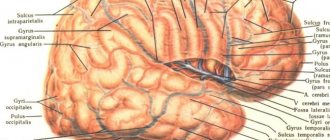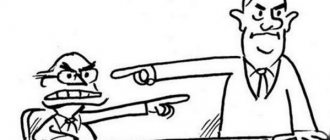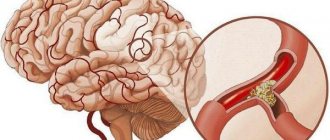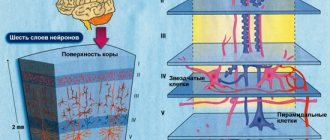What are the features of development, when it is formed and clearly manifested?
In preschool children
In young children who have not yet reached 4 years of age, acquaintance with the world occurs through interaction with objects and touch, so the peculiarity of these preschoolers is that in the first place they still have effective thinking (more about the features of visual-effective thinking in children we told here).
From 4-5 years old, children can already imagine various situations in their heads and can find an object based on its verbal description. A child of this age is characterized by a more extensive picture of the world.
For primary and secondary schoolchildren
The new environment changes the child’s way of life, his social roles in the team and family. In an educational institution, tasks become more complicated, and the student’s mental activity ceases to rely only on the practical component. In order to solve problems, you need to learn to reason and analyze, and these are new mental operations. And this is where imaginative thinking begins to work (for why you need to improve imaginative thinking in adults and children and what methods and techniques for its development are available, read here).
The main difficulty in the correct mental development of children of primary preschool age is that they quickly lose interest and, as a consequence, the essence of the process. By middle school age, a child can already plan. Correctly formed visual-figurative interaction at this point contributes to better learning of new subjects at school.
In the lives of teenagers
Attention. During adolescence, there is a big leap in mental activity. The evolution of figurative cognition occurs in conjunction with speech changes.
Visual-figurative thinking at this stage is associated with the following manifestations: the teenager strives for correct definitions and logical justifications, sentences with a complex structure appear more often in speech, and it becomes more expressive.
A good level of all types of thinking allows one to begin a consistent study of the fundamentals of science in adolescence. New school subjects require generalization of experience, handling complex concepts, the ability to think independently, compare and reason, and the development of these skills is formed on the basis of visual-figurative thinking and is closely related to it.
What does it mean in adults?
In adults, visual-figurative thinking interacts with practical thinking, this allows you to act according to the situation. Throughout human history, imaginative thinking has allowed people to improve their manual skills. A high level of such thinking in adulthood improves creative abilities, increases the degree of creativity and the generation of new ideas. It also improves different areas of memory, inner sense and allows you to feel free in unfamiliar situations.
What professions require it?
Creative professions require the use of imaginative thinking and creativity, which comes from it and will work in tandem with a person’s analytical abilities. Imagery contributes to the development of a sharp mind and the desire to expand one's horizons. The ability to find non-standard approaches to various situations will help you get out of them easier and faster. And the ability to visualize desires and dreams will make their fulfillment more achievable.
Types of thinking
In the brain, information processing occurs in different directions. This is created by different types of thinking that help us solve hundreds of daily problems.
The various tools that are in the arsenal of our brain, namely generalization and systematization, synthesis, analysis and much more, allow us to most fully perceive the world around us and develop. However, they are only individual elements of large-scale processes occurring in consciousness. The main types of thinking that serve as basic constructs in a person’s perception of the world around them include:
- practical or concretely effective;
- concrete-figurative;
- abstract.
The listed types of thinking differ from each other in the characteristics of the tasks they perform. The latter can be practical or theoretical.
Diagnostic and research methods
Levels
The formation of imaginative thinking is achieved by the age of seven and is the main contribution to the overall process of mental development.
The degree of development is divided into three levels: low, medium and high.
- While at the lowest level the child does not see connections between objects and has a very small vocabulary.
- The average level is characterized by completing tasks only with prompting from an adult.
- At a high level of development, children can build a coherent story, see commonalities and combine objects into a group.
Violations
The main disorder is developmental delay. Children are not drawn to toys, they have no desire to touch an object; they are monotonous in their actions.
The child is very poor at mastering such actions as squats or walking sideways or with his back. He does not see what a certain action can lead to; it is difficult to teach him how to button a jacket or tie his shoelaces.
In adult life, people with disabilities are very awkward. They often find themselves incompetent in everyday life and do not keep order. In some cases, underdevelopment of imaginative thinking can be combined with accelerated development of other types of thinking.
Methodology
Most often, to identify difficulties in the development of this thinking, the following tests and techniques are used, including:
- classification of objects;
- cut pictures;
- exclusion of items;
- comparison and concept;
- Koos cubes.
Visual-figurative thinking
The main means of mental activity of this type are images. They, in turn, are the result of understanding reality and its sensory perception. In other words, the image is not represented as a photographic imprint of the object. It is the result of the work of the human brain. That is why the object mentally created by an individual has some differences from the original.
People's thinking is capable of operating with three types of images. Among them:
- Images of perception. They have a direct connection with the human senses and represent smells, sounds, pictures, etc. Such images also cannot be compared with a photographic copy of reality. After all, a person may always fail to see certain details or not hear something. The brain will complement and conjecture everything that is missing to create a complete picture.
- Images-representations. This is information that continues to be stored in human memory for a long time. Over time, such images become less and less accurate. Not very important and significant details are forgotten or lost.
- Images of the imagination. These elements represent the result of one of the most unknown cognitive processes. Using imagination, a person is able to recreate the desired image from a description or come up with an object that he has never seen in his life. Nevertheless, all this has direct connections with reality, since it is the result of combining and processing the information that is stored in human memory.
Each of the listed types of images takes an active part in the cognitive activity of the individual. They are also used when a person performs abstract logical thinking. Without creating images, it becomes impossible to solve various problems, as well as creative activity.
Why is it important to develop?
Attention. Increasing the level of any type of thinking in a child is an important process that needs to be given special attention. The child must be able to imagine a situation in order to apply this knowledge to solve problems in the future.
Developed imaginative thinking allows you to learn to perceive the world in all its emotional coloring. This will help you interact more easily with your surroundings and see the beauty around you. The skill of imaginative thinking greatly simplifies a child’s interaction with the outside world.
How does skill formation occur?
There are many accessible and effective ways for children:
- Observation of nature.
- Studying art.
- Collecting puzzles.
- Creating drawings from memory.
- Depiction of abstract concepts: music, emotions, sounds.
- Modeling from plasticine.
- Working with colored cardboard and paper.
- Solving riddles.
An excellent method for developing visual and figurative thinking is origami.
What is hindering the process?
It is necessary to work with children in a calm, favorable environment, motivating them for positive results and not scolding them for failures.
You cannot prevent your child from taking toys apart. The baby thus gets to know the world and learns to look for connections between different objects.
Attention. The child's passivity, a small number of games and late development of speech can interfere with the formation of visual-figurative thinking.
Concept of thinking
Every day and constantly a person receives a wide variety of information from the outside world. As a result of the work of our senses and organs, smells and sounds, visual images, tactile and taste sensations become available to us. A person also receives certain data about the state of his body. This process occurs due to direct sensory perception. This is the primary building material with which thinking will have to work in the future. What is it? Thinking is the process of processing received sensory data, their analysis, comparison, generalization and inference. It represents the highest activity of the brain, as a result of which unique, new knowledge is created. That is, information that until this moment was not yet in the sensory experience of the individual.
What exercises help?
In children
Methods and exercises vary depending on the age of the child.
It is useful to use the pyramid game with preschoolers. Gradually complicating the task, rings of different sizes and objects of different shapes are used. If, before starting an exercise, the child is able to tell what he will do now, then the development process has begun. Creative tasks asking you to draw an object are great for developing imaginative thinking. Exercises with various cards are useful. For example, using cards that depict a figure, children must tell what it looks like, or the “find the odd one out” exercise.
Abstract logical thinking
With this direction of the mental process, a person operates with those phenomena that he is not able to smell, see with his eyes or touch with his hands. Abstract-logical thinking uses only a few of certain patterns, isolated from the imaginary, abstract qualities of the subject of research.
Abstract-logical and concrete thinking are closely intertwined with each other. An example of this is the explanation using mathematics of those phenomena that do not exist in nature. So, when we talk about the number “2”, we understand that we are talking about two units. But at the same time, people also use this concept to simplify certain phenomena.
Another clear example is language. In nature there are no letters, no words, no sentences. Man himself invented the alphabet and composed phrases to express those thoughts that he wants to convey to others. This allowed people to find a common language with each other.
The need for abstract logical thinking arises in situations where there is some uncertainty that leads to an intellectual dead end.
Levels of Thinking
Human brain activity, aimed at solving problems and understanding the world around us, has its own indicators of development. This includes the specific level of thinking used by a person, namely:
- Reason. It is the initial level of thinking. In this case, the operation of abstractions is carried out within a given template, an unchanging scheme and a rigid standard. Reason is the ability to reason clearly and consistently, to carry out the correct construction of one’s thoughts, to strictly systematize and clearly classify facts. Its main functions are division and calculation. The logic of reason is formal. She studies the structure of evidence and statements, while paying attention to the form of already “ready-made” knowledge, and not at all to its development and content.
- Intelligence. It is also considered dialectical thinking. Reason represents the highest level of cognition of the rational type, the characteristic features of which are the creative operation of created abstractions and the study of their nature (self-reflection). The main task of this level of thinking is the unification of various components, including the synthesis of opposites, with the identification of the driving forces and root causes of the phenomena being studied. The logic of reason is a dialectic presented in the form of a doctrine of the development and formation of knowledge in the form of the unity of its form and content.











